Great Destinations: Midi-Pyrénées, Lighting the Way
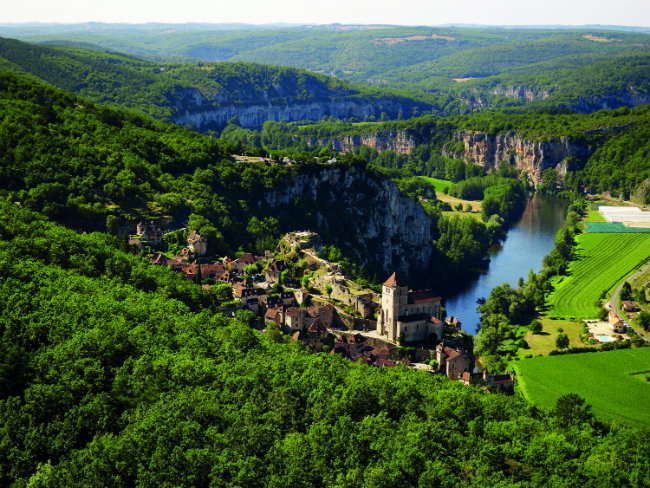
Underground and overground, Gillian Thornton celebrates the dramatic landscape and history of Midi-Pyrénées
Darkness doesn’t get any blacker than deep inside the Pyrénées. As my senses gradually adapt, the bright sunlight of France’s far south seems worlds away. Our small group has walked by flashlight along a dry riverbed inside the Grotte de Niaux and now we’ve been told to turn our lamps off and absorb the feeling of infinity. I’m not nervous, but it’s strangely disorienting. Solid black. Utterly silent. Completely still. And then life suddenly changes again with a single beam of light.
Our guide has trained her flashlight on the wall just in front of us and suddenly I see bison and deer galloping at me out of the rock. Some prehistoric artist has miraculously created a feeling of movement simply by using charcoal and the contours of the cave. And this is no reproduction. These Magdalenian paintings are the real deal, a staggering 14,000 years old. It’s humbling stuff, a privileged moment I know I shall treasure for the rest of my life.
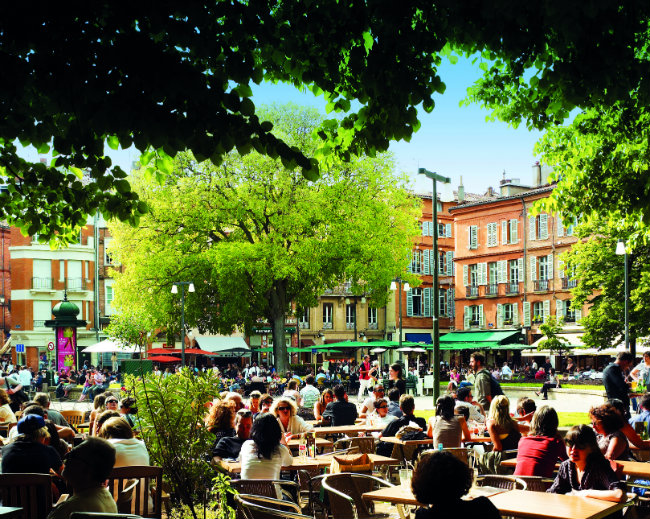
Place St Georges in Toulouse. Photo: OT TISE
I’ve had many wonderful experiences in France but some of the most spectacular have occurred in the eight départements that made up the region of Midi-Pyrénées. Today they are officially joined with neighbouring Languedoc-Roussillon to form the unwieldy new super-region of Occitanie. There’s no coastline in Midi-Pyrénées, but the region has pretty much everything else – majestic mountains and mighty rivers; heritage towns and quaint villages; picturesque canals and engineering marvels.
In the far south, the neighbouring départements of Hautes-Pyrénées and Ariège tumble down from the jagged high peaks to softer agricultural land. This is an area where farmers still take their livestock to summer mountain pastures, the centuries-old tradition of transhumance, celebrated with village festivals.
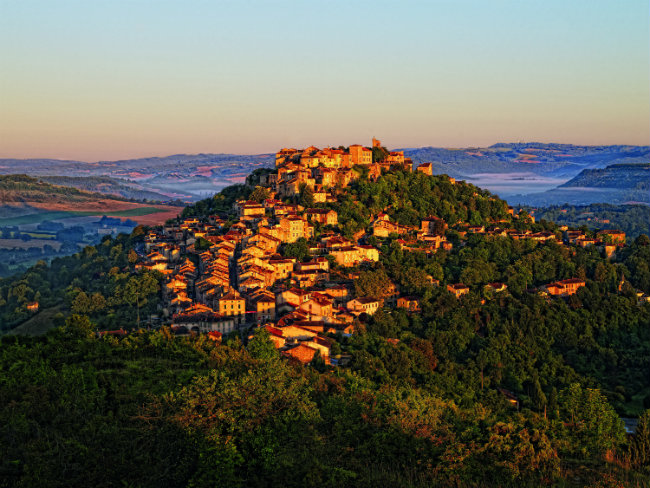
Cordes-sur-Ciel. Photo: CRT Midi Pyrenees/ D Viet
North a bit and regional capital Toulouse takes centre stage in the département of Haute-Garonne. To the west lies the Gers, still referred to by its ancient provincial name of Gascony, legendary home of the Musketeers. Tarn, to the east, is famous for its UNESCO-listed Episcopal City of Albi, while the adjacent département of Tarn-et-Garonne takes its name from its two rivers. Finally, in the north of the region, Lot and Aveyron are examples of rural France at its very best. You’d need to take a lot of holidays to even scratch the surface of this diverse and captivating region, but you can’t do better than start with the 26 locations that have been designated Grands Sites de Midi-Pyrénées in a clever piece of marketing by the tourist board. Some of the Grands Sites are natural, others man-made, but all are guaranteed to deliver an experience that will stay with you long after you’ve put your suitcases away. So here’s a whistle-stop tour through some of my personal favourites.
Midi-Pyrénées is home to some of France’s most iconic rivers and waterways: the Garonne and the Lot, the Aveyron and the Tarn, as well as the Canal du Midi and the Canal des Deux Mers. At the Bassin de Saint-Ferréol you can swim in the main reservoir for the Canal du Midi and visit the museum to hear about this extraordinary feat of engineering conceived by engineer Pierre-Paul Riquet.
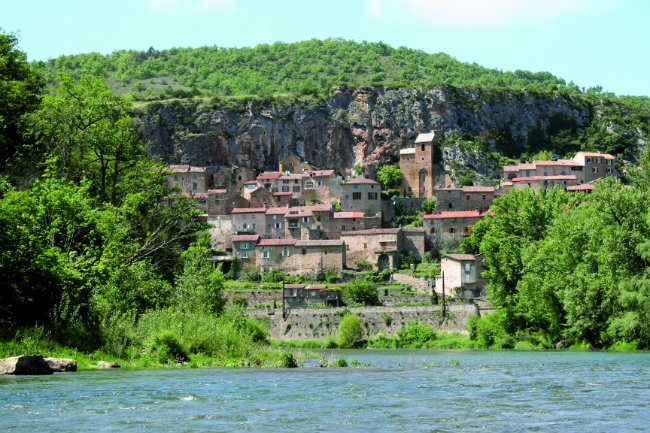
The medieval village of Peyre in Aveyron.
I’ve enjoyed all kinds of waterborne adventures in Midi-Pyrénées. Try a cruise excursion through the heart of Toulouse; a canoe down the Tarn or Aveyron gorges; and a river boat beneath Saint-Cirq Lapopie, listed among France’s Most Beautiful Villages. But my absolute favourite has to be an unforgettable trip by flat-bottomed boat beneath the lofty span of the elegant Millau Viaduct with the Bateliers du Viaduc from Creissels.
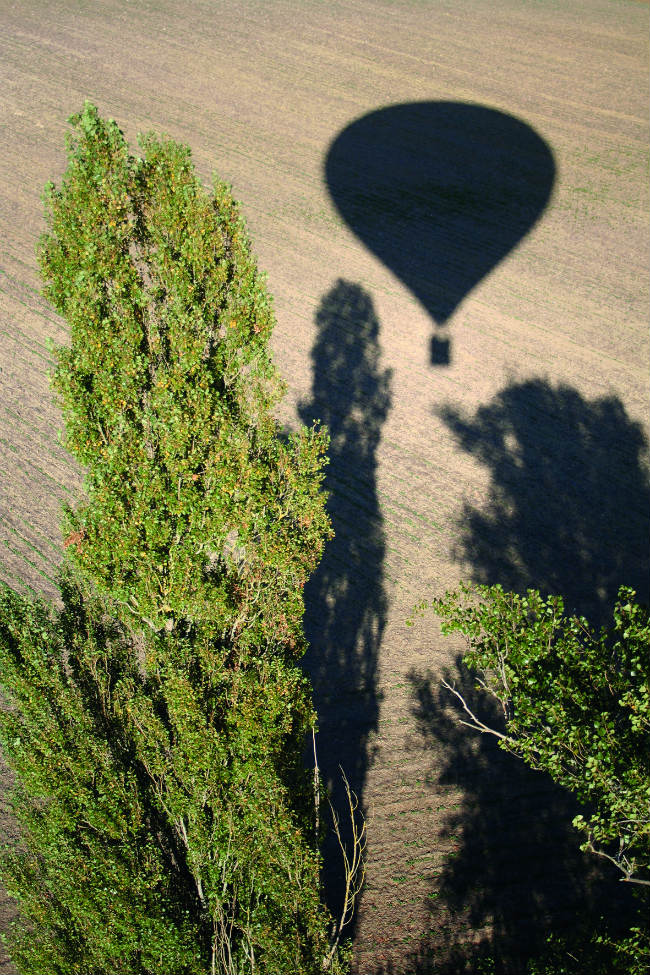
Balloon ride over the Gers countryside.
The punts turn around beneath the medieval village of Peyre, which clings to the rock face above a bend in the Tarn. Other atmospheric medieval towns and villages across the region include the hilltop stunner of Cordes-sur-Ciel; Mirepoix, with its half-timbered houses and arcades; Foix, with its hilltop castle; and the bastide town of Castelnau-de-Montmiral. History here is dramatic and often brutal. Climb the steep path to Montségur Castle in Ariège, the site where in the 13th century besieged Cathars chose to die in flames rather than renounce their faith.
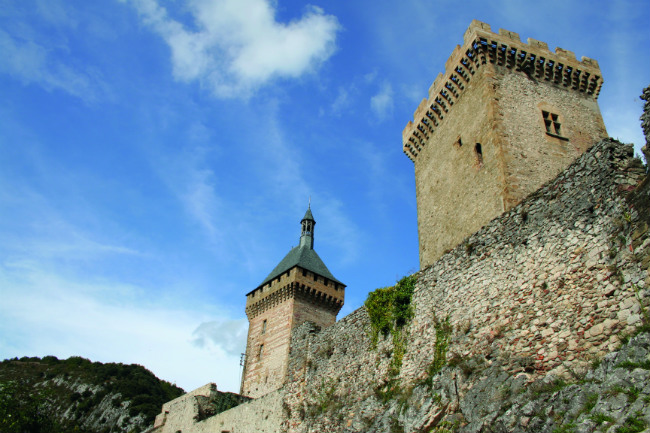
The Chateau de Foix, a monument historique since 1840
Religious buildings can be pretty dramatic too. I’ve never forgotten visiting Albi’s Sainte-Cécile Cathedral, listed by UNESCO as a World Heritage Site. Vast but architecturally plain from the outside, it’s staggeringly brilliant inside with densely detailed murals in vibrant colours over walls and ceiling. And don’t miss the museum to favourite son Toulouse-Lautrec in the adjacent Bishop’s Palace.
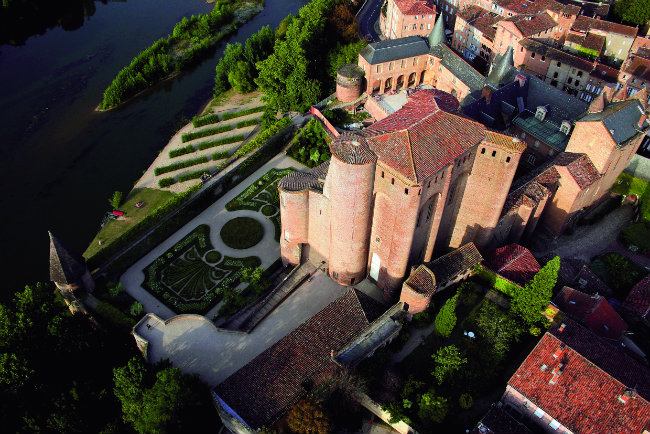
Palais de la Berbie in Albi. Photo: Ville d’Albi
And in Moissac, gem of Tarn-et-Garonne, the glorious UNESCO-listed cloister of Saint-Pierre Abbey boasts 76 stone columns, each intricately carved with flowers, birds and beasts. Pilgrims have flocked to Moissac for centuries, as they have to Conques in the north of the Aveyron. Book a guided tour of the church to enjoy a view of the nave from the upper gallery.
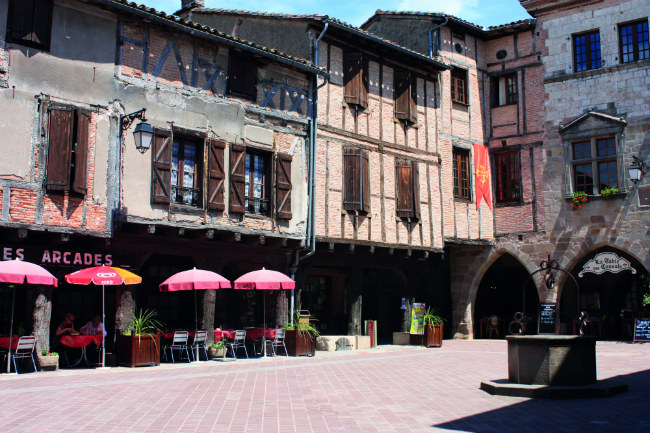
The well-preserved bastide town of Castelnau-de-Montmiral
Toulouse is a must-see with its pink brick buildings, elegant squares, and pretty waterways. There’s history and architecture here to fill anyone’s city break, especially for flight fans. Europe’s capital of space and aeronautics, Toulouse has hosted a packed programme as Capital of Science 2018. Popular attractions for families are the Cité de l’espace discovery centre, which has been a gateway to the universe for 21 years, and Aeroscopia, dedicated to the history of aviation. Never had the chance to step on board Concorde? Well, here you can, as well as other legendary aircraft. And the Runway of Giants (opened last November) combines an aviation museum, exhibition hall and gardens on the old runway operated by pioneering aviation company Aéropostale.
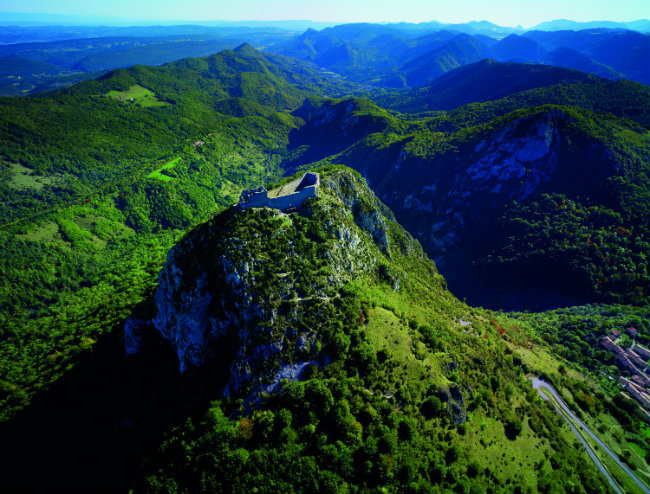
The Chateau de Montsegur is built on the ruins of a Cathar stronghold. Photo: CRT Midi Pyrenees/ D Viet
CAPTAIN OF THE MUSKETEERS
Every Grand Site town has its own USP. Auch, the historical capital of Gascony, has a cathedral famed for its stained glass, its vast organ and its 1,500 plus carved oak figures. The town also boasts various museums, monuments, and a vibrant open-air lifestyle. A split staircase of 374 steps links the upper and lower parts of town, which are separated by a 35-metre drop. Look out for the bronze statue of D’Artagnan, captain of the king’s Musketeers, standing with his head held high and hat at a jaunty angle. Born Charles de Batz de Castelmore in Lupiac, not far from Auch, D’Artagnan loyally served his king until he was killed in 1673 at the Siege of Maastricht.
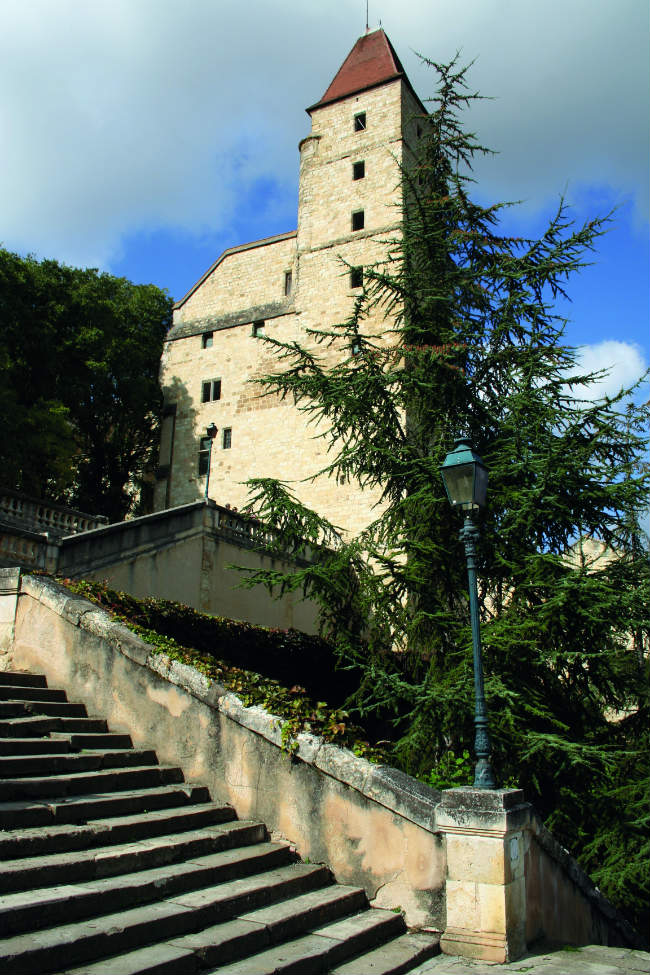
Auch, capital of the Gers department
Rodez, departmental capital of the Aveyron, boasts a flamboyant Gothic cathedral, a wealth of medieval and Renaissance houses, and two unique museums: the Fenaille Museum of ancient menhir statues and the contemporary art of the Soulages Museum. In Cahors, principal town of the Lot, look out for the Roman ruins within the subterranean car park before you explore the gems above ground!
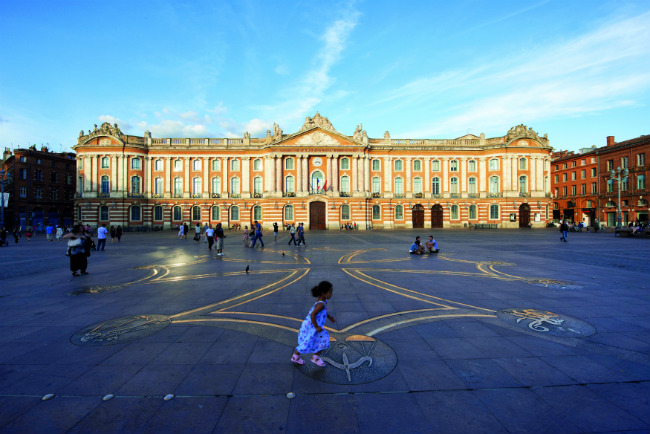
The Place du Capitole in Toulouse. Photo: OT-Toulouse/ D. VIET
The small town of Figeac in the Lot Valley is an unexpected cradle of modern civilisation: it was the hometown of Jean-François Champollion, the first man to decipher Egyptian hieroglyphics by studying the Rosetta Stone. I can spend hours in the museum in his birthplace that charts the development of written communication across the world. Then there’s Lourdes, a town which has been catering for pilgrims every year since 1858, when Bernadette Soubirous saw visions of the Virgin Mary in a cave. Visit the Sanctuary of Notre-Dame-de-Lourdes, tour the castle, and take the Pic du Jer funicular.
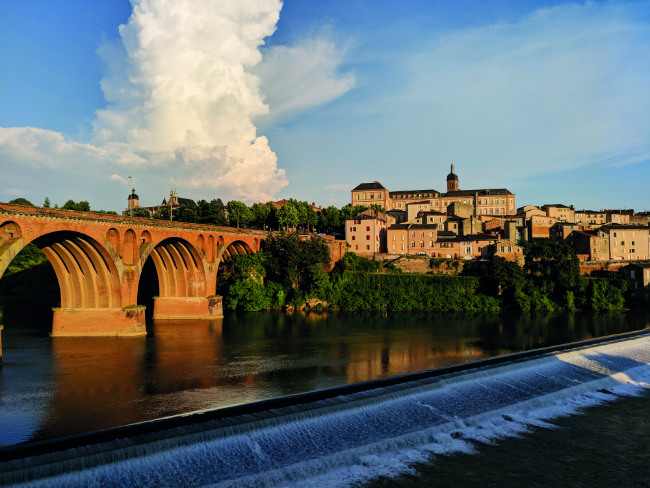
Albi, hometown of Toulouse-Lautrec. Photo: Marion Sauvebois
PINK BRICK BASTIDE
My list of favourite Grand Sites de Midi-Pyrénées wouldn’t be complete without Montauban, a gem of a town built – like Toulouse – of pink brick to typical bastide design. Its 17th-century place Nationale, bordered by shady arcades, is the most symmetrical spot to sit and soak up the sun, whatever the season. Wander the old streets, admire the private mansions, and see paintings by local boy Jean-Auguste- Dominique Ingres, currently in the museum ‘outside the walls’ in the Ancien Collège while the Ingres Museum itself undergoes renovations.
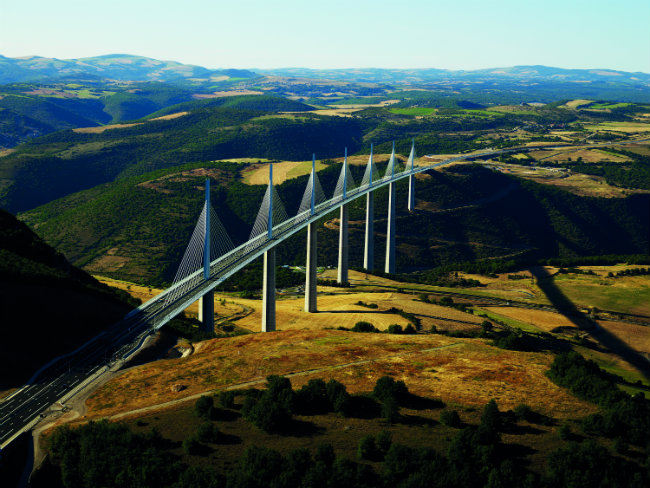
The Millau Viaduct holds the record for being the world’s tallest bridge. Photo: CRT Midi Pyrenees/ D Viet
The Grotte de Niaux, with those 3D bison paintings, is one of France’s lesser-known gems, but the surrounding département of Ariège, in the foothills of the Pyrénées, is rich in prehistoric sites. Visit the Prehistoric Park at Tarascon-sur-Ariège for an overview. Meanwhile, in the north of the region, in Lot, the Pech Merle caves in the Célé Valley are a must with their spine-tingling images of human handprints, curious paintings of spotted horses, and fossilised adolescent footprints.
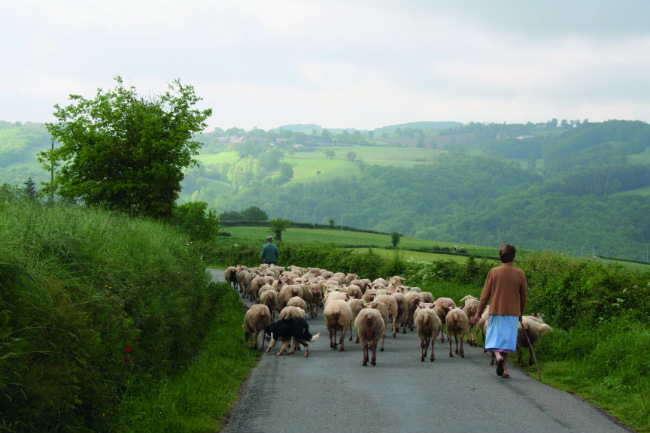
Rural life in Aveyron
Enjoy a different angle on the Pyrénées from the lofty Pic du Midi, which opened to tourists in 2000 and completed its unique visitor attractions in 2018. The highest planetarium in Europe complements the century-old observatory; and now visitors can also test their nerve on the Hyper Belvédère, a 10-metre metal footbridge offering vertiginous views. A bit too thrilling? Then settle for lunch with a view and enjoy home-cooked regional fare in the panoramic restaurant. You can even stay over.
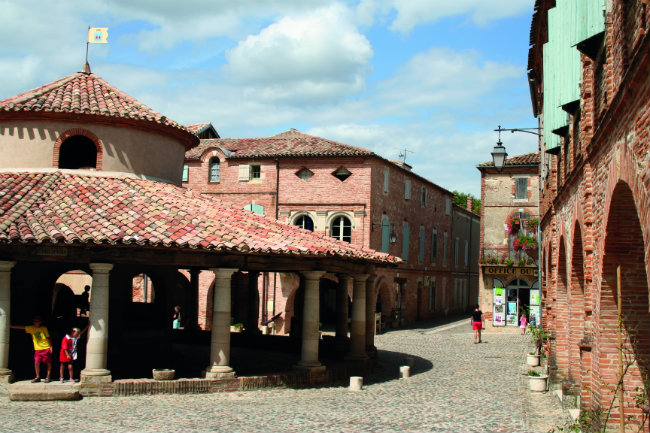
Auvillar is a stopping off point for pilgrims on the Santiago de Compostela route. Photo: Tarn et Garonne
Less than an hour away, the horseshoe-shaped rock formation of the Cirque de Gavarnie is one of the most spectacular natural Grands Sites, nestled among the peaks of Hautes-Pyrénées. But one of my happiest memories of Midi-Pyrénées came from even higher up – in the basket of a hot air balloon.
Taking off from a field beneath the perched village of Lectoure in the Gers, we watched as rabbits and deer fled from our silent shadow across autumn fields shorn of crops. Shadows lengthened as the sun set over the Pyrénées and we waved at children playing outdoors before bedtime. It was a magical moment then and, ten years on, is still right up there with my best-ever French holiday experiences. And so many of them from Midi-Pyrénées!
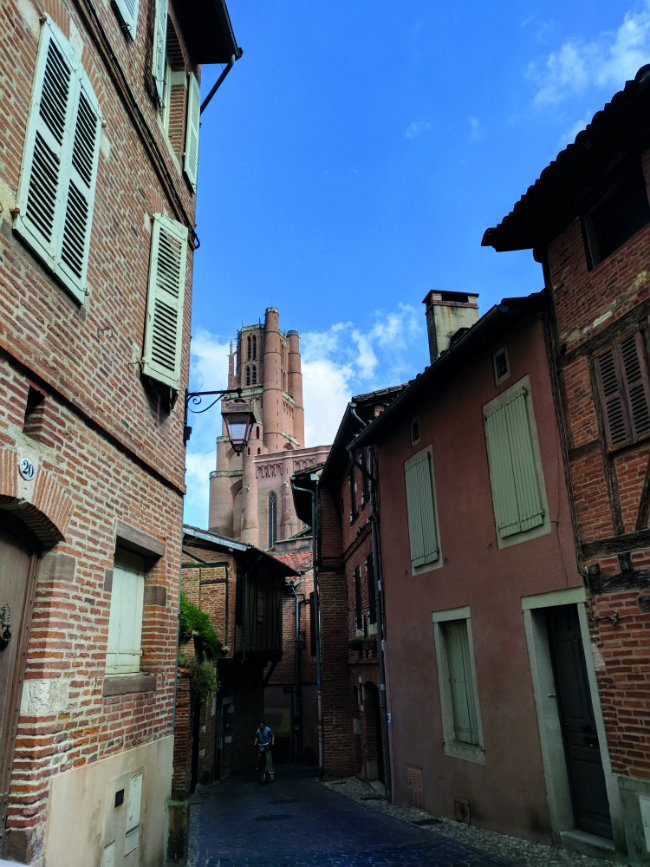
A glimpse of Sainte-Cecile Cathedral in Albi. Photo: Marion Sauvebois
SIDEBAR: A TASTE OF THE REGION
FRUIT: Market gardening is big in Tarn-et-Garonne, so look out for roadside stalls selling melons, asparagus, strawberries, peaches and Chasselas table grapes from the Quercy hills. Between 1932 and 1939, luxury hotel the Moulin de Moissac offered la cure uvale, a programme that involved eating large quantities of Chasselas grapes to cleanse the body of toxins!
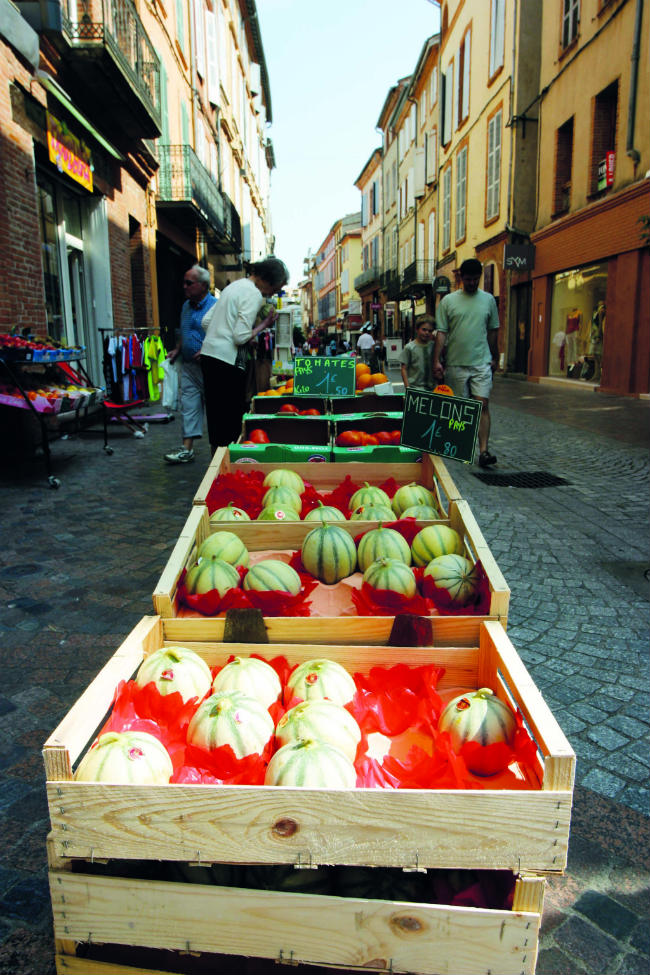
Melons for sale at a market in Tarn-et-Garonne. Photo: Justin Postlethwaite
QUERCY BLACK TRUFFLES: Visit Lalbenque in the Lot any Tuesday between December and mid-March to witness the spectacle of the weekly truffle market. Situated in the Causses du Quercy Regional Nature Park, 15 minutes from Cahors, Lalbenque is labelled a Site Remarquable du Goût for its outstanding food heritage.
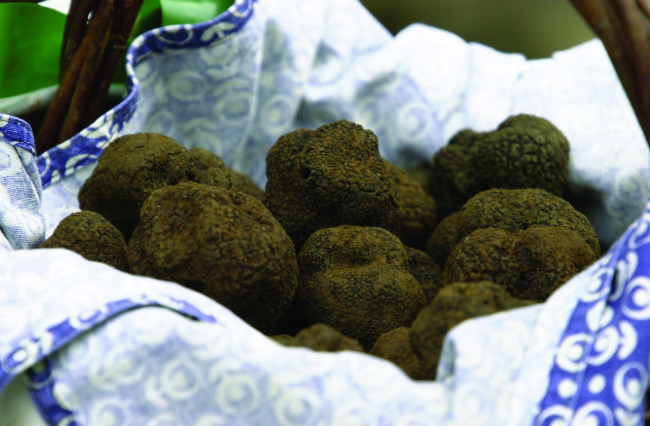
Black truffles. Photo: CRT Midi Pyrenees
DUCK AND GOOSE: Whether or not you approve of the practice, the Midi-Pyrénées is the spiritual home of foie gras – but ducks and geese are big business here in any shape or form, with recipes for everything from gizzards (gésiers) to smoked breast and confit. The birds are also a key ingredient of cassoulet, a traditional speciality of which the Toulouse recipe is one of three regional variations using locally-grown beans. In winter, watch out for the marchés au gras – or fat markets – selling all manner of duck and goose products at special one-off fairs across the Gers.
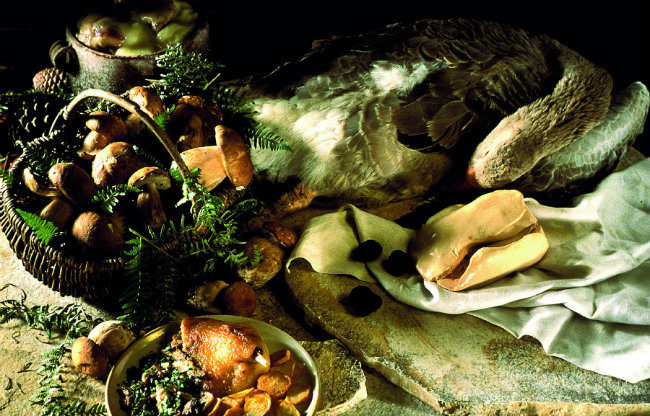
Regional specialties. Photo: Brochard/ CRTA
ARMAGNAC: The oldest of the French brandies, the Armagnac growing area is split into three areas of production whose contours roughly form the shape of a vine leaf – Bas- Armagnac, Armagnac-Ténarèze and Haut-Armagnac. For something a little lighter, try a Floc de Gascogne, an aperitif made from two-thirds fresh grape juice and one-third Armagnac. www.armagnac.fr
ROQUEFORT: Made from sheep’s milk and matured in caves in the south of Aveyron, near Millau, this prized blue cheese comes from a village at the foot of the Grands Causses Regional Nature Park. Today, seven companies share the natural cheese cellars carved out of cracks in the Combalou limestone cliff. A number of cellars are open for visits and tastings. www.tourisme-aveyron.com
From France Today magazine
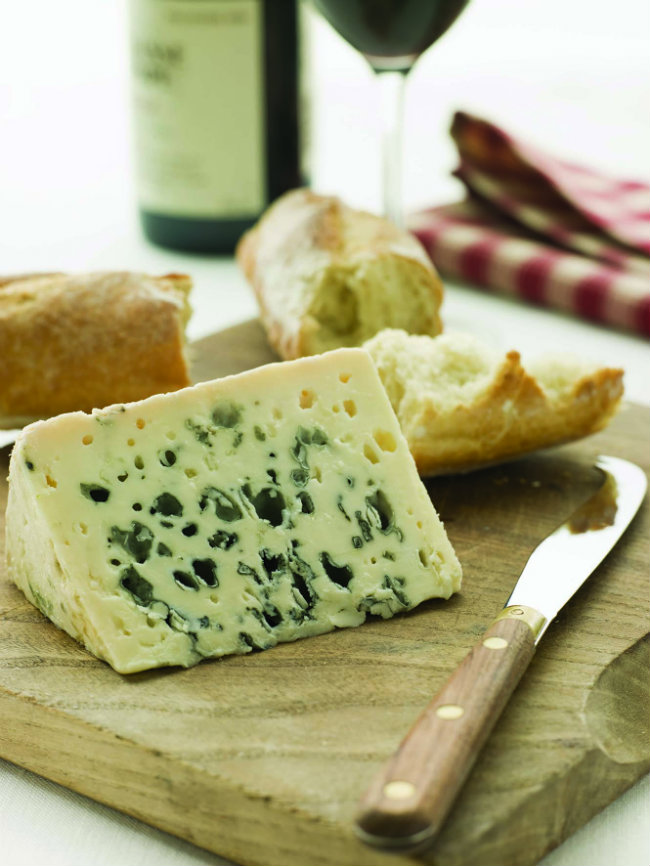
Roquefort cheese. Photo: Shutterstock
Share to: Facebook Twitter LinkedIn Email
Leave a reply
Your email address will not be published. Required fields are marked *




REPLY